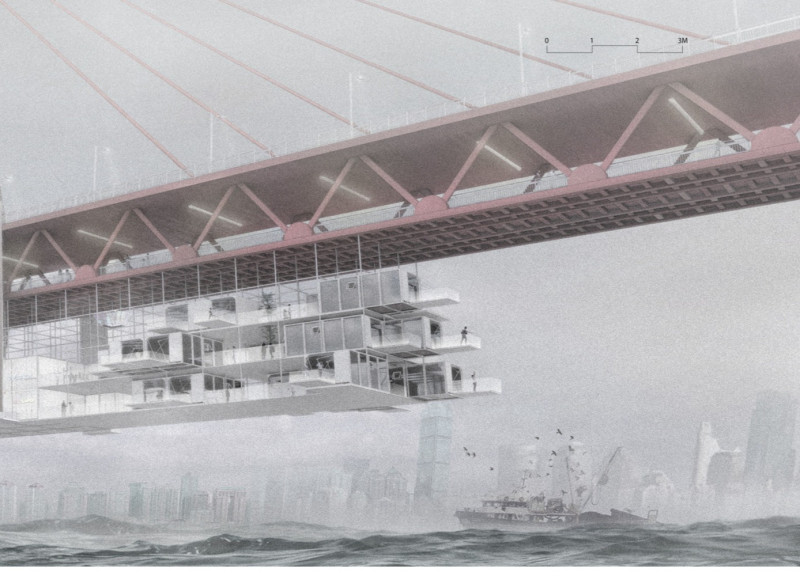5 key facts about this project
The project at Dongshuimen Bridge in Chongqing, China, focuses on rethinking the purpose of a traditional arterial bridge. It integrates living spaces beneath the bridge, creating a multifunctional area that promotes both transportation and community interaction. This design moves beyond merely being a passageway and aims to enrich urban life by combining infrastructure with residential elements.
Architectural Concept and Integration
The concept emphasizes the connection between infrastructure and urban living. By using modular container homes, the design challenges the bridge’s limited role as just a transit point. Instead, it envisions the bridge as a space for people to live, interact, and engage with their surroundings. This approach creates a lively atmosphere where movement and habitation coexist.
Structural Design and Sustainability
Microhome units are suspended within a reinforced cable system beneath the bridge. This clever use of space helps maintain the stability of the bridge while maximizing its utility. Each unit operates on an off-grid basis, generating its own electricity using wind and solar energy. This design reduces dependence on traditional power sources, aligning with current trends towards more sustainable living.
Resource Management Systems
Water management is an important part of the design. Rainwater collection systems work alongside the use of the Yangtze River for water supply. Each Microhome includes a bokashi compost system and greywater recycling fixtures. These systems promote efficient resource use and support a self-sufficient living environment, emphasizing environmental responsibility.
Design Features and Adaptability
The design includes features that enhance livability. Foldable furniture and hydroponic gardens make the Microhome units flexible and functional. These elements allow the interiors to adapt to varying needs, encouraging residents to personalize their spaces. This adaptability fosters interactions and creates a sense of community among residents, enhancing the bridge's aim to be more than just a thoroughfare.
The integration of living spaces into the bridge highlights a new way to think about infrastructure. By blending the roles of transportation and habitation, the project creates a setting where urban life can thrive. Innovative features and careful resource management work together to establish an environment that supports both individual needs and community, making the bridge a lively part of the urban landscape.



















































